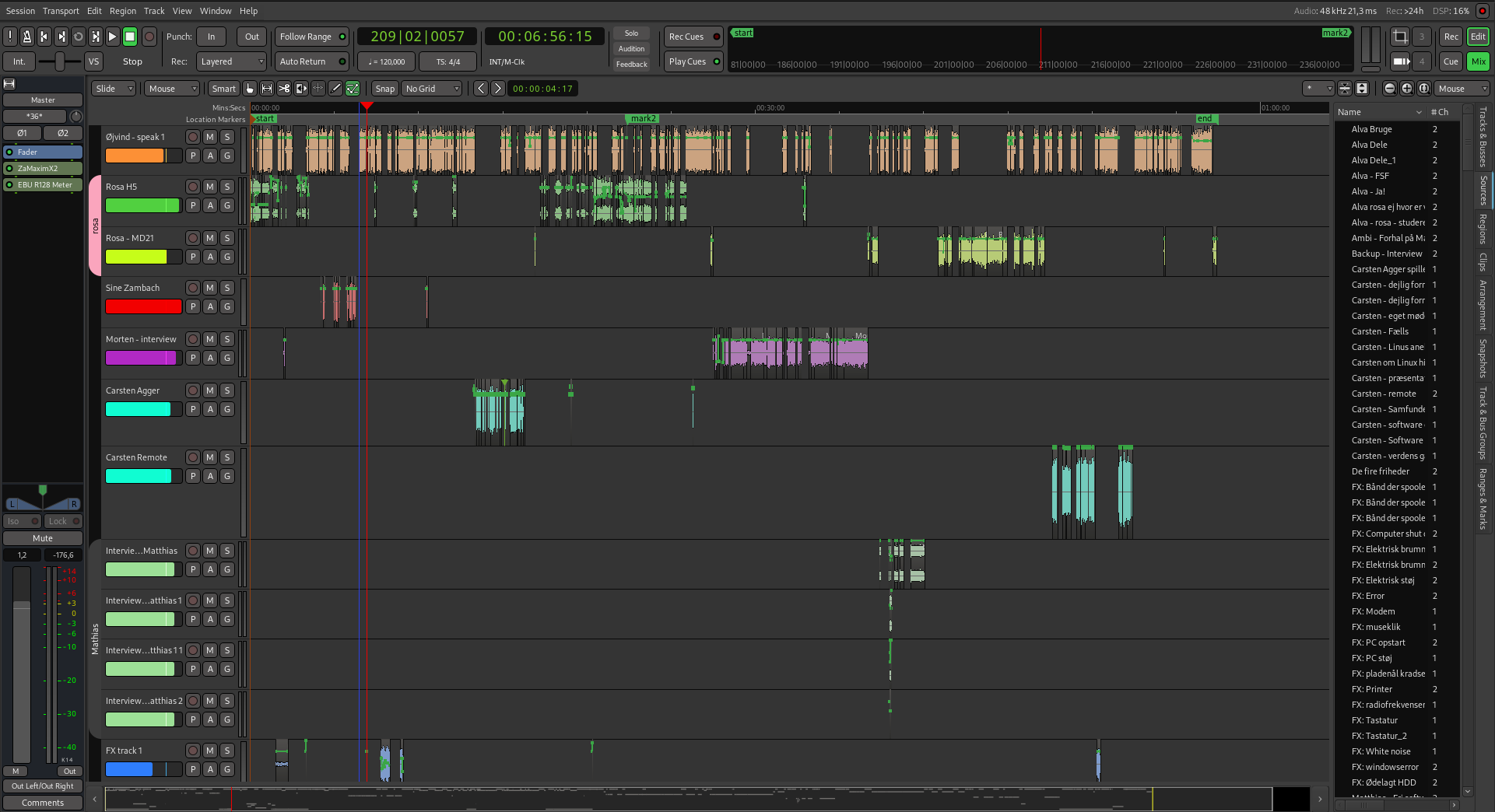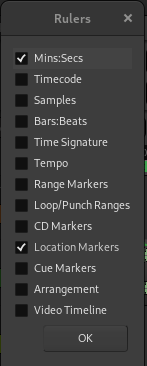My Ardour set up for podcasting

For my podcasts I have been using various tools, but the best one by far has been Ardour.
Ardour works across linux, MacOS and Windows, which has been a great advantage for me in my daily work where I have used it on all three platforms.
you can get ardour for all platforms via this link https://community.ardour.org/download
Free software
Besides being free/open source software, and the one with the best economical model I've yet seen*, Ardour also has a great community with an active user forum as well as a very thorough manual.
*(basically you can either get a ready-to-run program for a relatively small fee, or you can go the DIY-route and build it from source, which IMO is a brillant way to highligt the need for support for FOSS projects)
Get Ardour up and running as a podcaster
While it's worth noting that Ardour is made mainly for music editing on a professional level, just liks its proprietary counterpart Protools(tm), it is a very powerful editor for any type of audio.
And just like Protools which has become the industry standard in radio production, according to https://transom.org/, Ardour is great for editing anything like podcasts, audio reportages, radio features or audiodrama.
Native support for a myriad of plugins, as well as stem-export and non-destructive editing are just some of the cool things you get in Ardour.
Just to give you an idea of this DAW's capabilities, here's is a picture of the screen from my most recent hour long feature, that Ardour handled like a breeze:

You may notice the track channel strip to the left, and the list of sources/soundbites to the left. These are invaluable to me when working with large audio projects.
At initial startup it can seem a bit daunting for a newbie, but don't worry, that feeling goes away quickly when you know the basics, that I'm about to give you here:
*Note: In this tutorial, I assume that you have bought the ready-to run program (because the base price of two meals is more than reasonable for such a powertool), and that you are on a Linux system.
- If you are on Windows or MacOS, instructions for how to get set-up are available on the page with the link.
Once you have downloaded and installed Ardour on your machine, in accordance with this guide, you are ready to configure the UI to facilitate a good workflow for any size of audio project.
removing the bars
In the top menu, go to Edit > Snap & Grid, and choose "No Grid".
removing the rulers you don't need
mouse over the time measurements in the top, containing "CD-markers", "Timecode", "Mins:secs", "Samples" etc., right click and uncheck the ones you don't need. Mine looks like this:

Getting the list of soundbites and the channel-mixing strip
In top menu, go to View and check the boxes for "Show Editor Mixer" and "Show Editor List"
- alternatively, you can just click: "Shift E" and "Shift L" for Editor mixer and editor List.